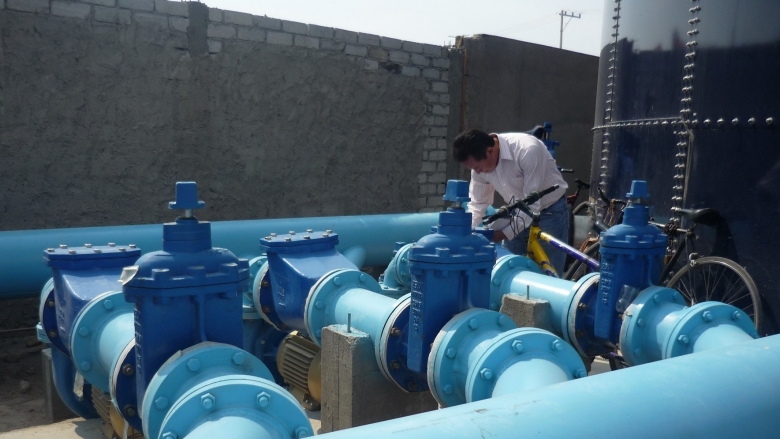Challenge
In 2005, nearly 98 percent of Mexico’s urban population had access to an improved water supply source. However, the quality of these water services was lagging due to the high level of inefficiency and the low financial sustainability of the service providers. Piped water was generally supplied for half the day, far below the 24-hour norm for other member countries of the Organization for Economic Co-operation and Development. The weighted average of non-revenue water (NRW) for utilities serving populations over 50,000 inhabitants was 38 percent; the consumption of more than one-third of utility customers was not metered, and over 20 percent of bills went uncollected.
Approach
The Mexico Water Utilities Efficiency Improvement Project (Programa de Mejoramiento de Eficiencia de Organismos Operadores, PROME) was aligned with the government’s vision of reducing sector subsidies by improving the quality of existing services through management and efficiency gains. The project also supported a policy goal of increasing the national average of utilities’ global efficiency from 36 percent to 44 percent. The project was one of several federal programs aimed at using subsidies as an incentive to improve performance.
The project was designed as a scale-up of a US$ 25 million loan (2005–2010), under which 18 large water utilities across the country improved their commercial, physical, and energy efficiency. PROME expanded the scale and geographic scope of that effort, targeting any water utility willing to design and implement an investment strategy and action plan and to monitor changes across a variety of performance indicators. Through the project, utilities could access (i) technical assistance funds to assess their current situation and design investment strategies and action plans to improve performance; and/or (ii) investment funds to realize those improvements.
Results
The PROME technical assistance support and investment program reached 91 water utilities across 25 states in Mexico between 2011 and 2015. Working through the centralized National Water Commission (CONAGUA), the project promoted the use of standardized indicators at scale that CONAGUA could aggregate and track.
During the project’s implementation period, the following results from beneficiary utilities were reported by CONAGUA:
· 25 utilities increased revenue by at least 5 percent per cubic meter of water produced.
· 12 utilities increased commercial efficiency by at least 5 percent.
· 8 utilities increased in global efficiency by at least 2 percent.
· 7 utilities decreased energy consumption per cubic meter of water produced by at least 5 percent.
· Several utilities confirmed that PROME support was essential to their long-term improvements in overall performance. For example, the utility SEAPAL in Puerto Vallarta, in the State of Jalisco, leveraged Bank funding through PROME and its predecessor project to help reduce total water production while serving a customer base that grew by 35 percent over the last 10 years.
Key project outputs included:
· Implementation of 500 individual utility improvements, including installation of household meters; network and pump rehabilitation; and replacement of electromechanical equipment.
· Capacity building, on themes such as standardization of best practices in procurement, provided to utilities of various sizes and levels of efficiency.
· 670 utility staff trained in best practices in efficiency improvement.
· PROME-funded diagnostics and studies that helped utilities further reduce costs and improve efficiency. The PROME-funded investment plan for the city of Guanajuato, for example, once implemented, is expected to increase physical efficiency by 10 percent, reduce NRW by a third, and save US$1.5 million in energy costs per year.
